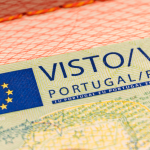Now, you might be interested in getting the Portuguese driving license explained. No doubt, the public transport in Portugal is fantastic.
But then, you may also love driving in Portugal, such as cruising along the sun-drenched Algarve coast or winding through the verdant hills of the Serra da Estrela. Nevertheless, you want the Portuguese driving license explained before you hop behind the wheel.
This article provides a clear explanation of the Portuguese driving license, including the process of getting one, eligibility, and the rules of driving in Portugal.
The Portuguese driving license explained.
The Portuguese driving license is the most vital thing you need to drive in Portugal. As a foreigner in Portugal, you may be eligible to exchange your pre-existing license, use it as it is, or get a license in Portugal (we will explain everything in this article). The Portuguese driving license has numerous vehicle categories and age restrictions.
Generally, the minimum age for driving most vehicles is 18 years, although it’s possible to start from age 16. If you want to rent a car, you must be over 21 years old. Your Portuguese driving license will also be valid until age 60. After that, you’ll need to revalidate regularly. Whether getting your Portuguese driving license for the first time or revalidating, you must attend driving lessons and pass both theoretical and practical exams.
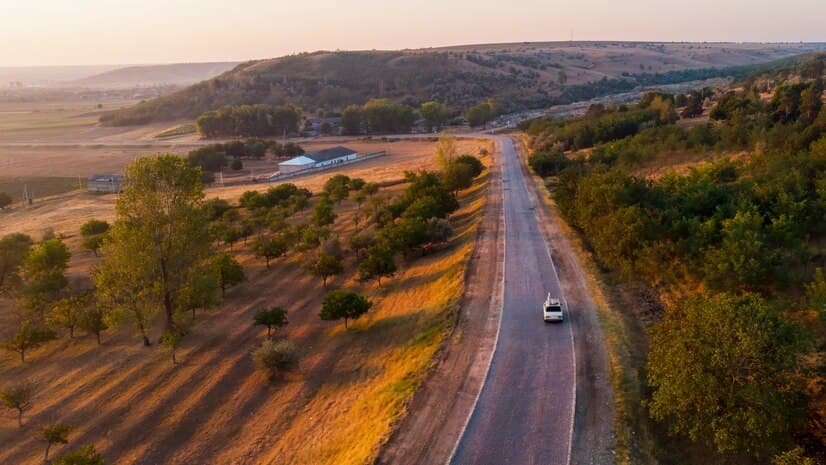
Age Limits and Different Types of Portuguese Driving Licenses
- Category AM: Mopeds/Motorcycles under 50cm3 – minimum age is 16 years.
- Category A1: Motorcycles up to 11kW between 50cm3 and 125cm3 and AM – minimum age is 16 years.
- Category A2: Motorcycles up to 35kW between AM and A1 – minimum age is 18 years.
- Category A: Motorcycles over 35kW power, AM, Ai and A2 – minimum age is 24 or two years of A2 license
- Category B1: Heavy Quadricycles (microcar) – Age 16
- Category B: Light vehicles, A1 category vehicles, or motorcycle driving licenses – minimum age is 18 years.
- Category BE: light vehicles with a trailer – minimum age is 18.
- Category C: Trucks and buses.
- Category D: Heavy-duty passenger vehicles with more than eight passengers
There are many additional categories, such as DE for towed industrial machines, agricultural or forest tractors, and more.
Essential Documents
Depending on your unique circumstances, there are different documents you need to present when applying for a driving license in Portugal. They include
- Temporary or permanent residence card
- Temporary or permanent residence
- Passport and study, work, temporary stay or residence visa
- Tax identification Number
- Car documents, where applicable (like registration, proof of ownership, and vehicle inspection report)
- International driving permit (if you have one)
- Proof of insurance (in Portugal, this is represented by a sticker on the lower right corner of the windshield of your car, alongside certificate of insurance)
- Electronic medical certificate proving you’re physically able to drive.
- Yellow or orange high-visibility safety jacket
- Reflective warning triangle
- Psychological assessment report and certificate showing your ability to drive
- A declaration issued by the counterpart entity (foreign entity issuing the license) or consular body certifying that the license is authentic and indicating the date of the issue, expiry license, and categories of vehicles the driver may drive.
- Suppose your original license is not written in Spanish, French, Portuguese, or English. In that case, you must have it translated and certified by the Portuguese embassy or consulate.
When you already own a car, it’s also recommended you have the following safety items, although they are not required by law:
- Strong flashlight with extra bulbs and/or batteries
- Spare wheel and toolkit
- A first-aid kit
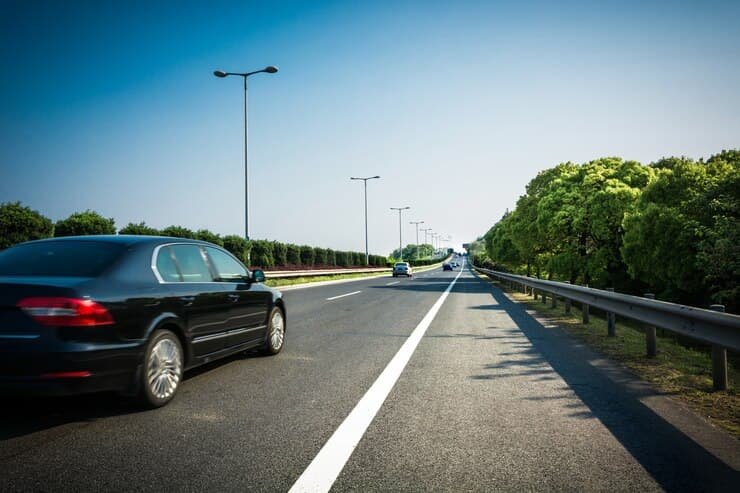
Procedure for Getting the Portuguese Driving License Explained
As a first-time driver in Portugal, you’ll have to attend both practical and theoretical lessons and pass the two tests to obtain your Portuguese driving license:
- You need to take a minimum of 28 theoretical classes and 16 practical classes.
- You need to take the theoretical exam and then, subsequently, the driving lessons. You must complete up to 32 hours of driving lessons at the driving school ( The IMT lists all accredited driving schools).
- The driving tests can be taken at an IMT test center or a private test center.
Now let’s look at other requirements you need to fulfill in detail:
Medical examination to prove fitness
A critical part of our guide on Portuguese driving license explained is letting you know what comes first in your application. Before you can obtain or apply for a driving license, you must submit an electronic medical certificate proving that you are physically able to drive. You also need to provide a psychological assessment report and certificate. Your medical certificate will be sent to IMT, while the psychological assessment will be sent to the driving school.
Passing the theoretical exams
Whenever you feel ready, you’ll apply for a Portuguese driving license. Subsequently, you register at the driving school, where you’ll be given a theory book with everything called “Codigo de Estrada.” Concerning the theoretical tests, you must answer 30 multiple-choice questions in about 35 minutes. You also have to pass 27 out of 30, making the theoretical exams one of the hardest. Remember, you can request to train and have your theory test in English, but you need to always make this request first during registration with the driving school.
Passing the driving exam
For the driving exam, you have about 40 to 50 minutes. Your examiner will be with you through the driving session, instructing you on what to do. One of the core aspects of this test is being asked to parallel park or circulate a sidewalk. After the test, the examiner will also tell you if you passed the test.
Obtaining a driver’s license
After passing the driving exam test, you’ll be asked to pay the fee to receive your provisional driving license. Subsequently, you’ll be sent your permanent driving license via mail. Nevertheless, suppose you’ve only been successful in the theoretical test. In that case, you have one year to get the driving aspect of the test. Within two years of enrollment, if you have only succeeded in the theory test, you only need to repay the registration fee.
After two years, and you still have not obtained qualification, you must restart the process, which includes getting a new medical certificate and psychological assessment report. Check out this article on Portugal’s driving license requirements for details on the cost and fees you’ll pay.
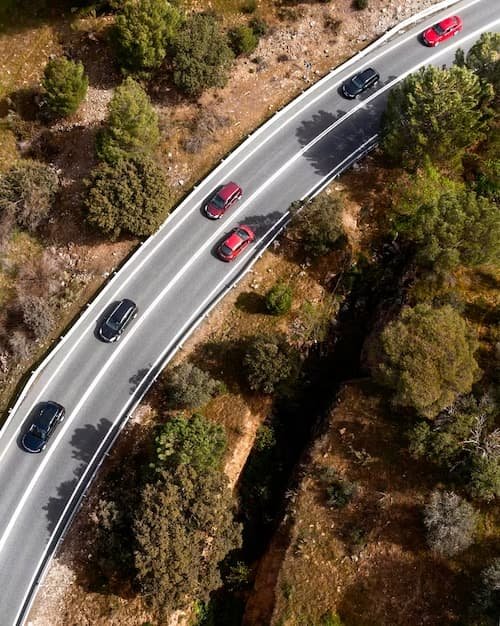
Exchanging your foreign driving license in Portugal from a non-EU country
There are also different sets of rules for everyone, depending on your country of origin. Generally, you have four scenarios under this umbrella.
Scenario 1:
As a temporary resident from the EU/EEA, you can use your driver’s license. You only have to register with the Institute for Mobility and Transport within 60 days that you will reside and drive in Portugal. Once that license expires, you can exchange it for a Portuguese driving license. Nevertheless, if you wish to establish residence in the country, you must inform the IMT within 60 days; otherwise, there’s an infringement. After this, a 2-year administrative limit is entered into your document. After that 2 years, your license will be exchanged.
Scenario 2:
Suppose you have a driving license from a non-EU country with a trade or traffic convention agreement with Portugal. In that case, your driver’s license can be exchanged. In that case, you’ll report to the IMT contact desk with a photocopy of your identification document and originals, tax identification number, medical certificate, and psychological assessment certificate. You also need to submit a declaration issued by the issuing authority or diplomatic or consular authority that attests to the authenticity of your document. Alongside, you’ll need to have your driving license translated and authenticated by the consular service of Portugal or another member state in the respective country where the license was not issued in Portuguese, French, English, or Spanish.
Scenario 3:
Alternatively, suppose your driver’s license was issued by other countries that are not signatories to the International Road Traffic Conventions but have reciprocity agreements with Portugal. In that case, you only have to pass the driving test. You do not have to attend driving school.
Scenario 4:
Nevertheless, suppose your country has a bilateral agreement, maintains reciprocity arrangements with Portugal, or is a signatory to International Road Transit Conventions or driving licenses issued by Portuguese authorities in Macao or the Macao Special Administrative Region (SAR). You can drive in Portugal for the first 185 days, provided you are not a resident. This applies to countries like Brazil, Switzerland, Morocco, Andorra, UAE, Sao Tome and Principe, Mozambique and Angola.
Scenario 5:
Other foreigners cannot use their driving license in Portugal. They must go through the process of getting the Portuguese driving license from scratch. This also requires living in the country for at least 185 days first before you can apply.
Driving license validity
Portugal requires that you revalidate your driving licenses at specific ages, depending on your license type. First, a driving license can be revalidated up to six months in advance.
It would help if you also revalidated within the deadline, or you may pay a fine. If two years also elapse before revalidating, you may have to retake the driving test to obtain the license. Suppose the driving license is not also revalidated within two to five years. In that case, you may also have to sit for a practical test. After five years, the driving license will be canceled.
That said, a medical examination is always vital to revalidating your license. For group 1 vehicle categories AM, A1, A2, A, B1, B, and BE mopeds and agricultural tractors, you must provide a medical certificate when you reach 60 years. You must always provide a medical certification if your license has a 137 restriction.
Furthermore, if your license has a 138 restriction, you must have a Certificate of Psychological Competence (CPS).
Those with Portuguese driving licenses in group 2 (heavy vehicles) always need a CPC and medical certificate when revalidating.
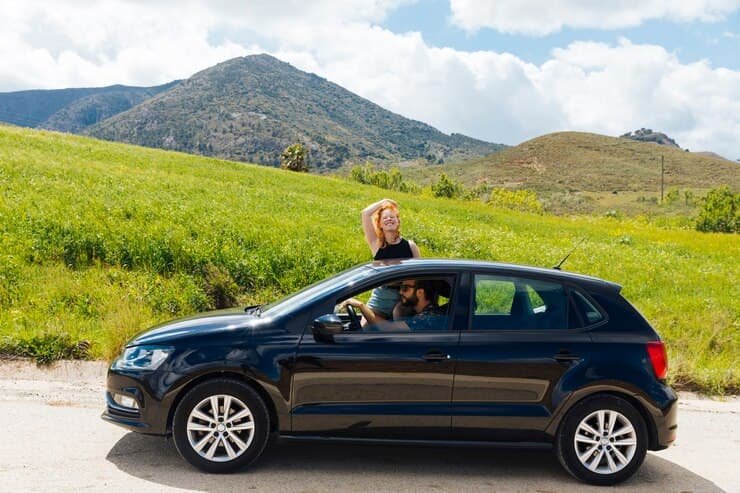
Driving Rules and Tips
Although your driving lessons will give you comprehensive information about driving in Portugal, understanding the rules of the road from the onset is great. Here are some important aspects you need to remember always:
Driving
In Portugal, you drive on the right and overtake on the left. It’s against the law to pass on the right on a straight road other than a motorway with several lanes.
Cars in the roundabout have the right of way. On crossings without traffic lights or stop signs, vehicles from the right have preference. You should not make a right turn at a red traffic light. You can only do so if a green arrow is flashing.
It’s against the law to cross a white line or double white line. If you wish to turn left and there’s a white line, you have to drive on to the next exit on the right and get back on the road in the opposite direction until you come to the exit you want.
Always come to a complete stop at a stop sign. Else, you risk paying a fine of up to 2.500 euros.
Seatbelts
Seatbelts are always mandatory for drivers and front-seat passengers. Additionally, drivers are banned from using mobile phones and/or headphones. You can only use mobile phones in a hands-free mode.
Using the motorway
It can get tricky driving in the countryside. This is because slip roads are often short and turn into a tight bend. Hence, you want to slow down early. Portuguese drivers are often impatient and prefer to avoid turn signals. Be prepared to be cut off or met with a car that turns without indications. Always stay alert, as drivers may tailgate or ride on your bumper.
Choose a low-emissions car.
Portugal has specific areas where only low-emission vehicles are allowed to drive. Because the municipality defines these areas, we recommend buying or renting a low-emission car. That way, you don’t have to compound things by trying to remember where your vehicle type is allowed.
Be safe on the mountains.
Nearly all roads in Portugal are well-maintained and in good condition. But roads around the mountains are a different story. In this case, consider renting a vehicle with a four-wheel drive. Also, on narrow, tight, and steep mountain roads, which turn into a lane, cars coming down the mountain always have the right of way. You also need to use your horn a lot. Always honk before driving around a bend so that oncoming vehicles know you are approaching.
Using road signs
Road signs are plentiful and straightforward. But they might not show up at night unless you have a whole light on them. In such instances, consider getting a car with GPS. It’s also possible to use old-fashioned paper road maps. But then we always recommend planning your trips in advance, especially as a newcomer to the country.
Speed limits
Portugal uses a metric system to measure distances and speeds in kilometers, not miles. Hence, the speed limits are as follows:
- 50kph in urban roads and residential areas
- 90kph on rural roads
- 100-20 kph on expressways and motorways
Speed limits are indicated on round white road signs with a red rim and the number in black in the center. They also write in white on the road itself.
Alcohol limits
Wines, liquors, and other alcoholic beverages are usually consumed at almost every meal in Portugal. But this does not mean you can and should drive under the influence. Portugal has strict and lower limits on alcohol. You can only have 0.5 grams of alcohol for 1 liter of blood. If over the limit, then the fines are severe.
Also, bear in mind that regardless of the limitations, alcohol tolerance is different for everyone. Our weight, sex, and age make one large glass of beer or wine mean different things. There’s also zero tolerance for drugs. You should also always remember that the Portuguese police carry portable credit card machines. So you’re expected to pay the fine on the spot.
Renting a Car in Portugal
When relocating, you can always bring your own car to the country, provided you follow the rules and regulations. That said, it’s also possible to rent a car in Portugal. Remember that most vehicles in Portugal, including brand-new models, have manual transmissions. If you’ve only used automatic, you might have to make a request beforehand. That’s why we recommend that you should still take stick-shift driving lessons before arriving in Portugal.
Nevertheless, you will find many opportunities to rent a car in Portugal. But the general requirement you’ll often hear from rental car firms is holding a five-year license. Ensure you read the fine print of conditions and double-check that all documents and comprehensive insurance are available and up-to-date.
Accidents
The Portuguese police emergency number 112 is the right choice to call. There are also options to choose different languages.
Wrapping Up
The Portuguese driving license explained guide allows you gain a big picture view of everything you must know about getting the Portuguese driving license. Now you can apply correctly and navigate the Portuguese bureaucracy with minimal sress. Nevertheless, once you begin driving in Portugal, you’ll come to appreciate the autonomy of controlling how you travel around the fascinating country.




